THE FLIGHT DECK • October 2022
A love letter to Airbus
We all love a triumphant underdog, from David vs Goliath to Rocky Balboa. So, it’s only natural that we’d celebrate the 50th anniversary of the first Airbus planes taking to the sky on 28 October 1972. Dive into the decades to discover how Airbus pursued startup ingenuity and international collaboration to become one of the most famous airliner makers in the sky
The 1960s
Ask a carpenter to build a house alone. They couldn’t do it. They would need bricklayers and plumbers. See the problem? It was the same in 1960s Europe. But, instead of trying to build a house, European governments were trying to build a plane, and no one country had the expertise to create a product that might compete with the American market.
In the early 60s, a French-British deal was signed to develop Concorde. However, as our grandparents began increasingly to holiday abroad, the name of the game in air travel turned from speed to cost. So, in 1967, Britain, France and West Germany signed a deal to build a paradigm-shifting liner: the A300. They put together the engineering equivalent of the A-Team – captained by the visionary Roger Béteille, a former military engineer, who was affectionately known as Mister Airbus.
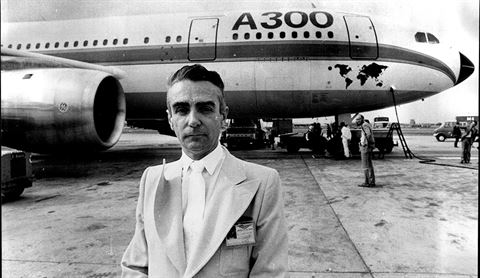
Roger Béteille, aka ‘Mister Airbus’ (Getty Images)
The result would be the world’s first twin-engine widebody airliner designed for medium-haul commercial flights using advanced composite materials. The sight of a commercial plane with only two engines, one less than its three-engine American rivals, must have seemed like the height of European sophistication to US buyers, alongside proper coffee, olive oil and Parisian fashion.
The 1970s
In the early 1970s, this European A-Team used its comparative advantages. Germany built the fuselage, the French the cockpit and the British the wings. Adverts played on Airbus’s status as an underdog taking on American manufacturers and emphasised a combination of luxury, cost and efficiency.
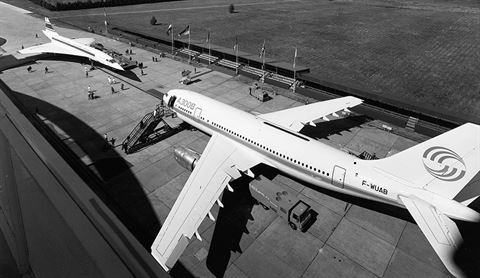
Concorde (left) and the twin-engine Airbus A300B (right)
Cheeky advert headlines included: ‘You can buy a jet now from Airbus. Or you can sit on your hands for about six years and buy one from someone else’. It seems as if Airbus was attempting an early form of viral marketing – it’s a shame social media hadn’t been invented yet.
Despite a good first impression, in October 1972, the A300 hit the market as the global 1973 oil crisis began. To amp up purchases, Airbus undertook a six-week sales tour across the Americas in the A300. Airbus executives made sure crates of Champagne were piled inside to woo customers – an understandable expense, considering the price of buying a plane!
The 1980s
The Airbus A300’s reputation finally took off. But the need to innovate remained. In 1984, Airbus launched the A320, a narrow-body twin-engine aircraft that famously replaced older control sticks with electronic interfaces.
The long-term effects of the 1970s energy crisis led to cost minimisation. More composite materials were adopted, dials were replaced with glass LED screens and passenger aisles were reduced. The A320 created so much excitement that the then Prince Charles and Princess Diana poured Champagne on its nose during a glitzy 1980s unveiling.
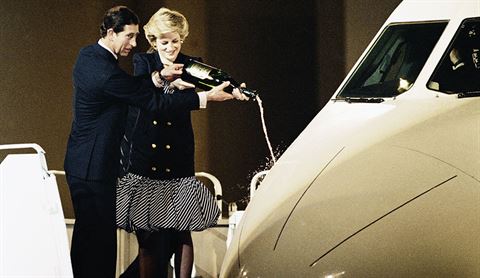
The then Prince Charles and Princess Diana at the A320 unveiling (Shutterstock)
In 1988, we inherited our first Airbus planes after buying British Caledonian, marking the start of our long relationship with Airbus. Our first A320s ran between London Gatwick and Geneva that year, providing easy access to skiing and chocolate for Brits with coiffed hair and ridiculously large mobile phones.
The 1990s
In 1991, we made our first planned purchase from Airbus. To celebrate the milestone, in a press conference between Jean Pierson, CEO of Airbus, and Lord King, British Airways chairman, King joked: “You’ll know how difficult it is to get one of these fine aeroplanes when you realise that we had to buy British Caledonian to get one!” A sneaky call-back to Airbus’s 1970s advertising, perhaps?
In 1998, we decided to order big – buying 59 A320s. That’s a lot of planes for pilots to learn to fly. This started a process resulting in Airbus being our second largest supplier in 2022.
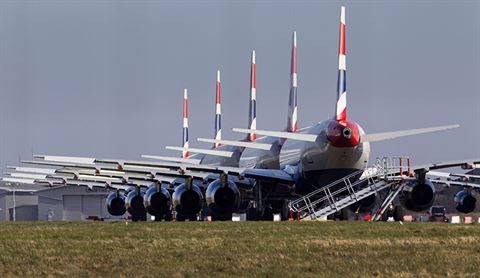
A British Airways Airbus fleet (Alamy)
The 2000s to today
In 2002, we bought ten A321s. This new Airbus model included a stretched-out fuselage to fit more passengers and a shorter travel range for increased weight, which suited the booming market for short-stop city breaks and European holidays in the 2000s.
If you’ve been on a European city break, you’ve probably flown on an A321. If you didn’t notice, you’re forgiven – who wouldn’t be distracted by the prospect of custard tarts in Lisbon or gravlax in Stockholm?
The year 2012 proved a defining moment for our relationship with Airbus when one of our A319s, a shorter version of the A320, picked up the Olympic flame from Athens, ferrying it safely to London in a specially designed ‘Firefly’ livery. The Olympic flame even got its own ticket and seat.
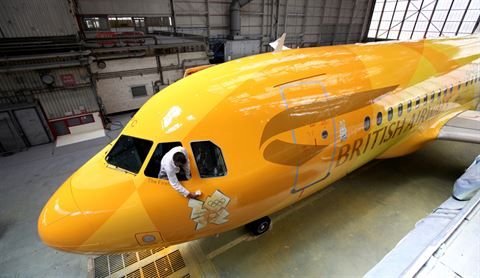
The British Airways ‘Firefly’
In 2020, like the rest of us, our A380, a double-decker quadruple engine first bought in 2013, had to face lockdown due to Covid.
In June this year, Airbus A380s returned to operation as some of the largest examples of commercial engineering in the sky.
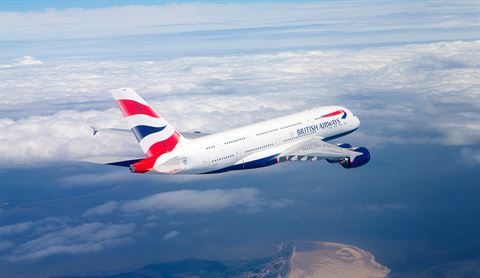
The Airbus A380, the world’s largest and most spacious passenger aircraft
This article has been tagged BA, Technology
More from previous issues

Where to eat at Heathrow T5
Whether you’re seeking a quick sandwich or three-course extravaganza, there are plenty of food and drink options at T5 to tickle your fancy
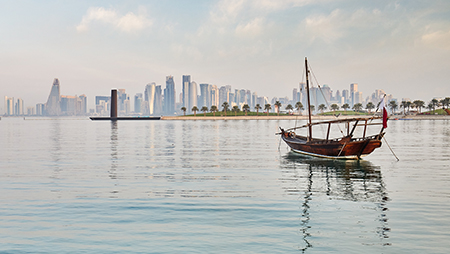
Doha and beyond: making the most of our connections
With increased flights to Qatar, here’s where to stay and play

What’s new at BA: sustainability special
BA Better World backs initiatives to promote mental health and climate change solutions, plus prize partnerships and a new menu

The joy of solo travel
With Companion Vouchers now providing a discount for solo travellers, friends of The Club share their singleton stories of adventure
